Explore the Agenda
8:00 am Check In & Registration
8:45 am Chair’s Opening Remarks
Enhancing Conjugation Chemistry for Unlocking Synergistic Potential In Dual Payload ADCs
9:00 am Next-Generation Multi-Payload ADCs: How Site-Selective Conjugations Enable New Modalities
- Potential of dual-payload ADCs and challenges presented by traditional conjugation approaches
- Review of approaches to manufacturing dual-payload ADCs, with focus on the CysTyr platform for site-specific conjugation
- Efficacy of Multi-Payload Conjugates produced using CysTyr conjugation
9:30 am Accelerating ADC Development and Manufacturing with ThioBridge™ Conjugation and Linker Technology
- ThioBridgeTM conjugation technology insights; how the technology works, and its advantages over stochastic conjugation technologies.
- Modulation of Drug-Antibody Ratio (DAR) using ThioBridge as effective feature to optimize therapeutic activity.
- In vitro and in vivo stability of ADCs generated using ThioBridgeTM
- Optimization of linker architecture to enhance in vivo efficacy of ThioBridgeTM ADCs. In vivo data for relevant ADCs generated using ThioBridgeTM technology
- ThioBridgeTM linker-payload and ADC manufacturing considerations.
10:00 am Morning Break & Speed Networking
11:00 am Designing Branched Linkers for Dual Payload ADCs to Balance Synergy & Selectivity
- Investigating chemical engineering strategies for designing branch linkers for achieving distinct tumor-specific cleavage mechanisms
- Addressing challenges in maintaining payload stability and ensuring effective payload release while preserving the overall functionality of the ADC
- Exploring the use of modified conjugation methods to achieve controlled ratios of each payload, ensuring synergistic effects without compromising safety or efficacy
11:30 am Targeting Solid Tumors & Hematological Malignancies with ADCs Utilizing Auristatin, Topo1i & Dual Payloads
- Hydrophilic linker with optimized cleavable moiety enables efficient auristatin, exatecan / topoisomerase 1 and novel modality linker-payloads for ADC generation
- DAR4 and DAR8 MMAU auristatin ADCs showed outstanding therapeutic window against solid tumors and hematological malignancies
- Utilizing optimized linker and conjugation technologies for dual-payload ADCs
12:00 pm Lunch
Advancing Linker Design Strategies for Achieving the Optimal Stability Profile
1:00 pm Exploring the Linkers & Architectures of Bicycle® Constructs
- Bicyclic peptides (Bicycles®) as a new targeting modality
- Differences between Bicycles-Conjugates and Antibody-Conjugates
- Linkers, conjugations and architectures of Bicycle constructs
1:30 pm The Story of the B7-H7 Targeting ADC: Exploring a Proprietary Linker for Maximal Compatibility with Targeting Biology
- Attributes of B7-H7 as a tumor target
- ADC linker approach for addressing the vast B7-H7 positive patient population
- NPX125 linker design and attributes
2:00 pm The Impact of Site-Specific Light Chain Conjugation on Antibody Structure Using Hydrogen Exchange-Mass Spectrometry (HX-MS)
- Differential HX-MS was used to explore the impact of drug conjugation on the conformational stability and structural dynamics of a mAb
- A side-by-side comparison between a mAb conjugated with a pyrrolobenzodiazepine drug and an unconjuagated mAb revealed subtle conformational changes induced by the linker-drug particularly near the site of conjugation
- To gain a comprehensive understanding of these effects other complementary biophysical techniques (DSC, DSF, SEC, and icIEF) were integrated into the study
2:30 pm Afternoon Break
3:00 pm Exploring Click-Cleavable ADCs & Their Application Scope
- Understanding limitations of current ADC linkers
- Exploring the principle and design of click-cleavable ADC linkers
- Targeting scope expansion and potential for improved efficacy and safety offered by click-cleavable ADCs
3:30 pm Novel: Exatecan-based ADC Using HDP’s Innovative Multimeric Linker Platform
- A new multimeric linker platform facilitated the development of HDP-201, an ADC with exatecan as payload, as novel therapeutic modality for the treatment of solid tumors
- The role of solubility enhancers in enabling site-specific coupling to cysteines, leading to stable, potent, and well tolerated ADCs
- HDP-201 shows dose-dependent tumor regression in vivo and enhanced anti-tumor efficacy following multiple doses
4:00 pm A Clickable Antibody Design to Generate Antibody-Drug Conjugates (ADCs) in a Trojan Horse Manner
- Conjugation within the Fab cavity strongly reduces ADC hydrophobicity
- Conjugation within the Fab cavity does not compromise conjugation efficiency nor functionality
- Linker length matters within the Fab cavity
